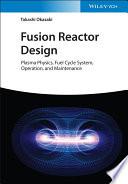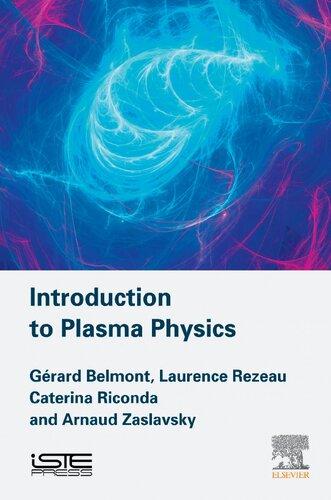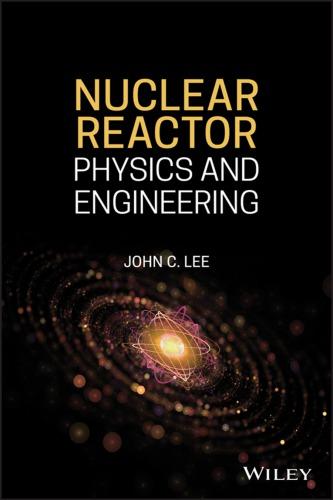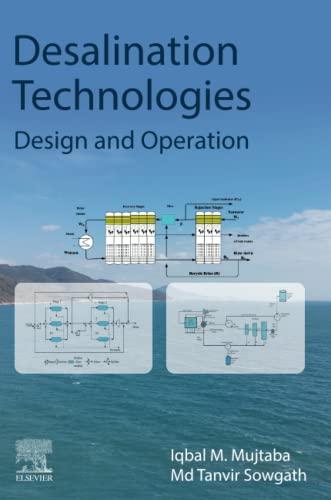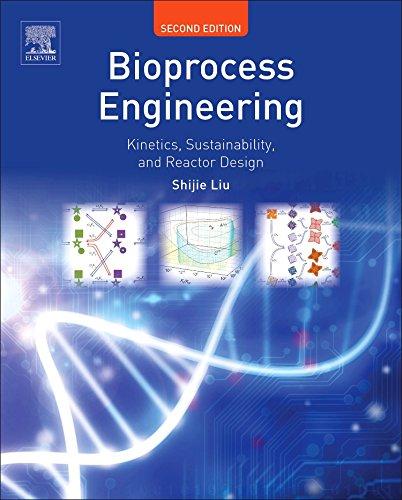Fusion Reactor Design: Plasma Physics, Fuel Cycle System, Operation and Maintenance 1st Edition Takashi Okazaki pdf download
https://ebookmass.com/product/fusion-reactor-design-plasmaphysics-fuel-cycle-system-operation-and-maintenance-1st-editiontakashi-okazaki/ Explore and download more ebooks at
Here are some recommended products for you. Click the link to download, or explore more at ebookmass.com
Introduction to Plasma Physics 1st Edition Gerard Belmont
https://ebookmass.com/product/introduction-to-plasma-physics-1stedition-gerard-belmont/
Nuclear reactor physics and engineering Lee
https://ebookmass.com/product/nuclear-reactor-physics-and-engineeringlee/
Nuclear Reactor Physics and Engineering John C. Lee
https://ebookmass.com/product/nuclear-reactor-physics-and-engineeringjohn-c-lee/
Desalination Technologies: Design and Operation 1st Edition Iqbal
M. Mujtaba
https://ebookmass.com/product/desalination-technologies-design-andoperation-1st-edition-iqbal-m-mujtaba/
Power System Operation, Utilization, and Control John Fuller
https://ebookmass.com/product/power-system-operation-utilization-andcontrol-john-fuller/
Fundamentals of Magnetic Thermonuclear Reactor Design Filatov
https://ebookmass.com/product/fundamentals-of-magnetic-thermonuclearreactor-design-filatov/
Bioprocess Engineering. Kinetics, Sustainability, and Reactor Design 2nd Edition Shijie Liu
https://ebookmass.com/product/bioprocess-engineering-kineticssustainability-and-reactor-design-2nd-edition-shijie-liu/
Bioprocess Engineering: Kinetics, Sustainability, and Reactor Design 3rd Edition Shijie Liu
https://ebookmass.com/product/bioprocess-engineering-kineticssustainability-and-reactor-design-3rd-edition-shijie-liu/
Sports Fields: Design, Construction, and Maintenance 3rd Edition James C. Puhalla
https://ebookmass.com/product/sports-fields-design-construction-andmaintenance-3rd-edition-james-c-puhalla/
FusionReactorDesign
FusionReactorDesign
PlasmaPhysics,FuelCycleSystem,Operationand
Maintenance
TakashiOkazaki
Author
Dr.TakashiOkazaki
2660-29Mawatari
Hitachinaka-shi 312-0012Ibaraki Japan
CoverDesign:Wiley
CoverImage:©dani3315/iStock/Getty Images
Allbookspublishedby WILEY-VCH arecarefully produced.Nevertheless,authors,editors,and publisherdonotwarranttheinformation containedinthesebooks,includingthisbook, tobefreeoferrors.Readersareadvisedtokeep inmindthatstatements,data,illustrations, proceduraldetailsorotheritemsmay inadvertentlybeinaccurate.
LibraryofCongressCardNo.: appliedfor
BritishLibraryCataloguing-in-PublicationData A cataloguerecordforthisbookisavailablefrom theBritishLibrary.
Bibliographicinformationpublishedbythe DeutscheNationalbibliothek TheDeutsche Nationalbibliothekliststhispublicationinthe DeutscheNationalbibliografie;detailed bibliographicdataareavailableontheInternet at <http://dnb.d-nb.de>
©2022WILEY-VCHGmbH,Boschstr.12, 69469Weinheim,Germany
Allrightsreserved(includingthoseof translationintootherlanguages).Nopartof thisbookmaybereproducedinanyform–by photoprinting,microfilm,oranyother means–nortransmittedortranslatedintoa machinelanguagewithoutwrittenpermission fromthepublishers.Registerednames, trademarks,etc.usedinthisbook,evenwhen notspecificallymarkedassuch,arenottobe consideredunprotectedbylaw.
PrintISBN: 978-3-527-41403-1
ePDFISBN: 978-3-527-83292-7
ePubISBN: 978-3-527-83294-1
oBookISBN: 978-3-527-83293-4
Typesetting Straive,Chennai,India PrintingandBinding
Printedonacid-freepaper
10987654321
Contents
Preface xxv
1CharacteristicsoftheFusionReactor 1
1.1TheFusionReactorasanEnergySource 1
1.1.1TrendsinWorldEnergyConsumption 1
1.1.2EnergyClassification 1
1.1.3NuclearFusionPowerGeneration 2
1.2NuclearFusionReaction 3
1.2.1NuclearReactionUsedintheFusionReactor 3
1.2.2CrossSectionoftheFusionReaction 4
1.2.3FusionReactionRate 5
1.3PlasmaConfinementConcept 7
1.3.1MagneticConfinement 7
1.3.1.1LinearSystem(Open-EndSystem) 7
1.3.1.2ToroidalSystem 9
1.3.2InertialConfinement 13
References 15
2BasisoftheFusionReactor 17
2.1PowerFlow 17
2.2FusionReactorStructure 19
2.3PowerGenerationConditionsoftheFusionReactor 20
2.3.1PowerFlowofthePowerPlant 20
2.3.2PlantEfficiency 21
2.3.3FuelSupplyScenario 22
2.4CorePlasmaConditions 22
2.4.1Break-EvenConditionandSelf-IgnitionCondition 22
2.4.2LawsonCriterion 22
2.4.3TypicalReactorConcepts 24
2.5RequirementsofPlasmaintheFusionReactor 24
2.5.1FusionTripleProduct 25
2.5.2 β Value 25
2.5.3CurrentDriveEfficiency 25
2.6OperationScenario 26
2.6.1PulseOperation 26
2.6.2Quasi-steady-stateOperation 27
2.6.3Steady-stateOperation 28
2.7StepwiseDevelopmentResearchoftheFusionReactor 28
2.7.1ExperimentalReactor 29
2.7.2PrototypeReactor 29
2.7.3DemonstrationReactor/CommercialReactor 29 References 29
3BasicsofPlasmaAnalysis 31
3.1BoltzmannEquation 31
3.2PlasmaAnalysis 32
3.2.1VelocityInformation 33
3.2.2NonlinearEffects 33
3.2.3ExternalElectromagneticField 33
3.2.4NumericalSimulation 33
3.2.5MainPlasmaTheories 33
3.3MagnetohydrodynamicEquation 35
3.3.1MacroscopicPhysicalQuantity 35
3.3.1.1MomentumFlowTensorP(r, t) 36
3.3.1.2PressureTensorp(r, t) 36
3.3.1.3EnergyDensity ��(r, t) 36
3.3.1.4InternalEnergyDensity U (r, t) 36
3.3.1.5EnergyFluxVectorQ(r, t) 36
3.3.2ParticleNumberConservationLaw(EquationofContinuity) 37
3.3.3MomentumConservationLaw 38
3.3.4EnergyConservationLaw 39
3.4KineticEquation 39
3.5LinearizedKineticAnalysis(OneDimension) 41
3.6LinearizedKineticAnalysis(ThreeDimensions) 43
3.7Quasi-LinearTheory 46
3.8TurbulenceTheory 49
3.8.1WeakTurbulenceTheory 49
3.8.1.1Wave–ParticleInteraction 51
3.8.1.2Wave–Wave(3Waves)Interaction 52
3.8.1.3NonlinearWave–ParticleInteraction 52
3.8.1.4Wave–Wave(4Waves)Interaction 52
3.8.2StrongTurbulenceTheory 53
3.9NeutronTransportAnalysis 53
3.9.1TransportEquation 53
3.9.2InteractionBetweenNeutronsandMaterials 54 References 55
4PlasmaEquilibriumandStability 57
4.1PlasmaEquilibrium 57
4.1.1PlasmaPressure 57
4.1.2EquilibriumEquation 59
4.1.3TokamakEquilibrium 61
4.1.4PlasmaCrossSection 63
4.2MHDStability 64
4.2.1EnergyPrinciple 64
4.2.1.1MHDEquation 64
4.2.1.2LinearizedIdealMHDEquation 66
4.2.1.3EnergyPrinciple 67
4.2.2EnergyIntegral 68
4.2.3MHDInstability 69
4.2.4MHDModeandResonantSurface 69
4.3PlasmaPositionalInstability 71
4.4KinkInstability 74
4.4.1Characteristics 74
4.4.2DispersionRelation 74
4.4.3StabilizationMethod 76
4.5InterchangeInstability 77
4.6BallooningInstability 78
4.6.1Characteristics 78
4.6.2EnergyIntegral 79
4.6.3StabilizationMethod 81
4.7ResistiveInstability 82
4.7.1TearingMode 83
4.7.1.1Characteristics 83
4.7.1.2BasicEquations 84
4.7.1.3MagneticIslandWidth 85
4.7.1.4MagneticIslandEvolutionEquation 86
4.7.1.5StabilizationMethod 88
4.7.2NeoclassicalTearingMode 88
4.7.2.1Characteristics 88
4.7.2.2DifferenceintheLogarithmicDerivativeDuetoBootstrapCurrent 89
4.7.2.3MagneticIslandEvolutionEquation 89
4.7.2.4StabilizationMethod 89
4.8DriftInstability 90
4.8.1DensityGradient 90
4.8.2DensityGradientandTemperatureGradient 90
4.8.3ResistiveDriftMode 92
4.8.4InfluenceofDriftWaveonPlasmaTransport 95
4.9ResistiveWallInstability 96
4.9.1Characteristics 96
4.9.2StabilizationMethod 97

